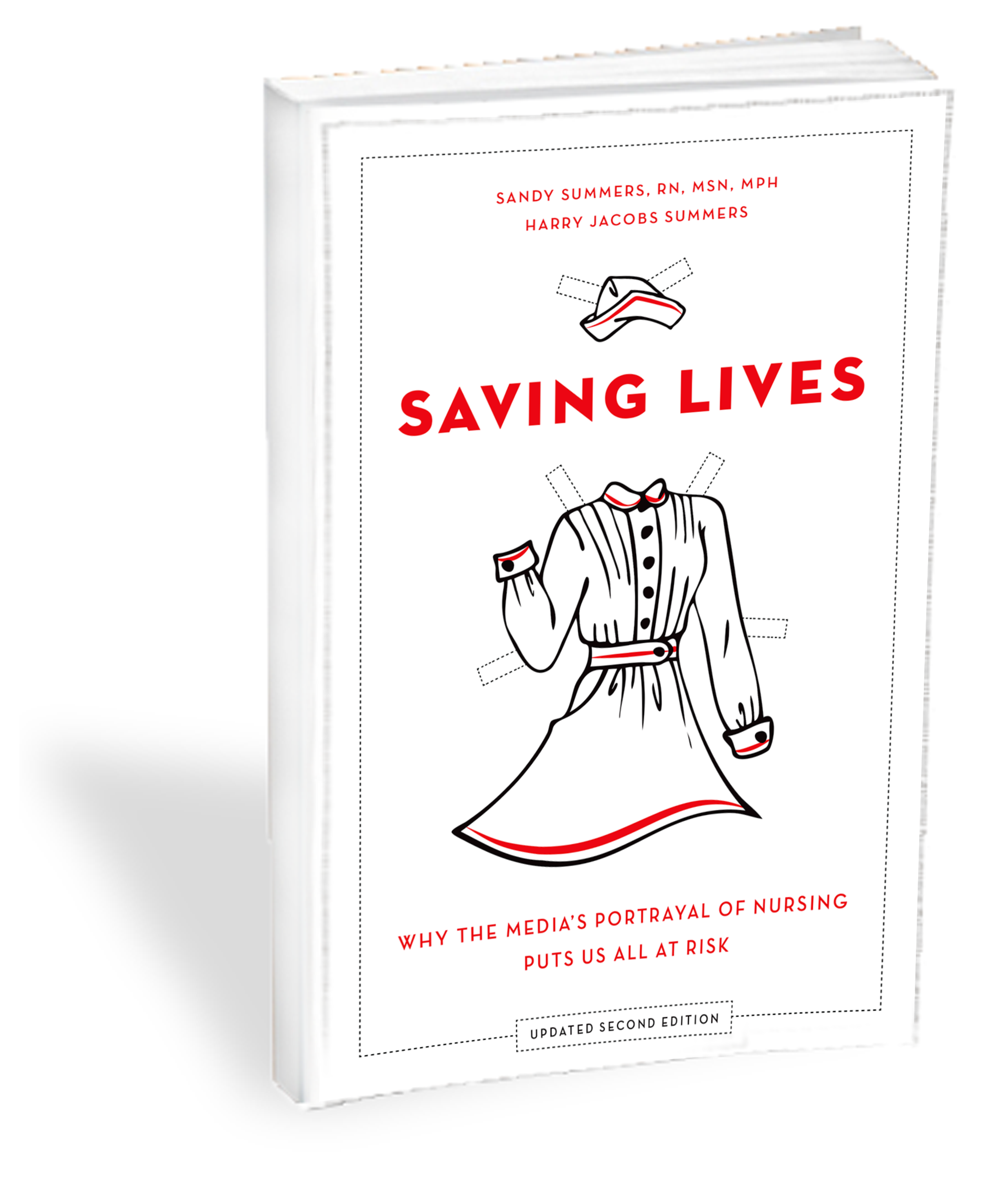Talk to Her (2002)
Starring Javier Camara, Dario Grandinetti, Rosaria Flores, Leonor Watling, Geraldine Chaplin
Directed by Pedro Almodóvar
Screenplay by Pedro Almodóvar
Sony Pictures Classics
Rated R
| Nursing rating |  |
Rating guide: |
| Artistic rating |  |
 Love is a mysterious dance of female protagonists and male attendants--or
at least it is in "Talk to Her," Almodóvar's ambiguous
tale of comatose women and the men who care for them. This complex film
explores the nature of the lover and the beloved through a vast, intersecting
array of other oppositions, including science, faith and art, talking,
listening and doing, creating, procreating and destroying--to name just
a few. The movie is not unsentimental, and a few of its implications are
troubling. But it is also clever, moving, well directed and acted, and
very ambitious. Almodovar received an Oscar for the screenplay and a nomination
for his direction.
Love is a mysterious dance of female protagonists and male attendants--or
at least it is in "Talk to Her," Almodóvar's ambiguous
tale of comatose women and the men who care for them. This complex film
explores the nature of the lover and the beloved through a vast, intersecting
array of other oppositions, including science, faith and art, talking,
listening and doing, creating, procreating and destroying--to name just
a few. The movie is not unsentimental, and a few of its implications are
troubling. But it is also clever, moving, well directed and acted, and
very ambitious. Almodovar received an Oscar for the screenplay and a nomination
for his direction.
 Cutting back and forth in time, "Talk to Her" reveals its
focus on two romances. The somewhat warped but apparently benign Benigno
(Javier Camara) has spent most of his life caring for his recently
deceased mother, leaving home only to attend nursing classes. Though
seen as sexually ambiguous, he becomes obsessed with the ballet student
Alicia (Leonor Watling) whose dance studio he watches from his apartment.
When she is hit by a vehicle and falls into a coma, she is brought
to the rehab facility where he works. Benigno nurses her body and
soul. He talks to her as if she were conscious, pursues her passions
as his own and tells her what he has seen, and oversees every aspect
of her care, including visits from her ballet master Katerina (Geraldine
Chaplin), whose arty pronouncements--like the film's Pina Bausch ballets--underline
its paradoxical themes. Meanwhile, sensitive travel journalist Marco
(Dario Grandinetti) meets bullfighter Lydia (Rosaria Flores), who
has been dogged by press inquiries into her broken romance with another
bullfighter (Rodolfo Fernandez). Marco overcomes Lydia's initial resistance,
partly by rescuing her from a situation that you might not expect
to trouble a bullfighter, and they become lovers. But when she is
gored in the ring and rendered comatose--shortly after a conversation
in which Marco talked and she was unable to say something she was
eager to--she lands in the same clinic as Alicia. There, Benigno befriends
Marco, encouraging him to talk to Lydia as he does to Alicia. Almodóvar
twists the relationships into new shapes, leading finally to an unexpected
third pairing.
Cutting back and forth in time, "Talk to Her" reveals its
focus on two romances. The somewhat warped but apparently benign Benigno
(Javier Camara) has spent most of his life caring for his recently
deceased mother, leaving home only to attend nursing classes. Though
seen as sexually ambiguous, he becomes obsessed with the ballet student
Alicia (Leonor Watling) whose dance studio he watches from his apartment.
When she is hit by a vehicle and falls into a coma, she is brought
to the rehab facility where he works. Benigno nurses her body and
soul. He talks to her as if she were conscious, pursues her passions
as his own and tells her what he has seen, and oversees every aspect
of her care, including visits from her ballet master Katerina (Geraldine
Chaplin), whose arty pronouncements--like the film's Pina Bausch ballets--underline
its paradoxical themes. Meanwhile, sensitive travel journalist Marco
(Dario Grandinetti) meets bullfighter Lydia (Rosaria Flores), who
has been dogged by press inquiries into her broken romance with another
bullfighter (Rodolfo Fernandez). Marco overcomes Lydia's initial resistance,
partly by rescuing her from a situation that you might not expect
to trouble a bullfighter, and they become lovers. But when she is
gored in the ring and rendered comatose--shortly after a conversation
in which Marco talked and she was unable to say something she was
eager to--she lands in the same clinic as Alicia. There, Benigno befriends
Marco, encouraging him to talk to Lydia as he does to Alicia. Almodóvar
twists the relationships into new shapes, leading finally to an unexpected
third pairing.
 Benigno is skilled, talkative, and a little unsettling. A master
of hands-on care, including massage and cosmetics, he protects Alicia
according to his view of what is best. He also seems willing to sacrifice
everything for her, though it's not clear how devoted he would be
if he was not in love, and we never see him nurse any other patient.
Benigno's psychic connection with Alicia seems either delusional or
supernatural. One apparent act of his is a paradox of hurting and
healing that drives the latter part of the story. Depending on how
this act is interpreted, Benigno may be seen as a predator, a savior,
or both. The clinic seems to serve those with the funds to hire private
duty nurses to provide total care for patients in persistent vegetative
states. Unlike Benigno, the other nurses there seem unremarkable.
They do their jobs, gossip, and cope with ordinary problems. It is
not clear that they are acting autonomously according to a scientific
nursing process. Indeed, the implication is that someone who needs
authoritative technical information must see a physician. We do see
the unflashy but vital things nurses do in caring for broken humans,
something that is rarely shown. The film suggests that this is important
work requiring a generous spirit and manual skill. Unlike most American
television, it does not pretend that inpatients' main relationships
are with physicians; they barely appear. But given the limited vision
of nursing here, and the ambiguous actions of Benigno, the film's
overall treatment of the profession is a mixed one.
Benigno is skilled, talkative, and a little unsettling. A master
of hands-on care, including massage and cosmetics, he protects Alicia
according to his view of what is best. He also seems willing to sacrifice
everything for her, though it's not clear how devoted he would be
if he was not in love, and we never see him nurse any other patient.
Benigno's psychic connection with Alicia seems either delusional or
supernatural. One apparent act of his is a paradox of hurting and
healing that drives the latter part of the story. Depending on how
this act is interpreted, Benigno may be seen as a predator, a savior,
or both. The clinic seems to serve those with the funds to hire private
duty nurses to provide total care for patients in persistent vegetative
states. Unlike Benigno, the other nurses there seem unremarkable.
They do their jobs, gossip, and cope with ordinary problems. It is
not clear that they are acting autonomously according to a scientific
nursing process. Indeed, the implication is that someone who needs
authoritative technical information must see a physician. We do see
the unflashy but vital things nurses do in caring for broken humans,
something that is rarely shown. The film suggests that this is important
work requiring a generous spirit and manual skill. Unlike most American
television, it does not pretend that inpatients' main relationships
are with physicians; they barely appear. But given the limited vision
of nursing here, and the ambiguous actions of Benigno, the film's
overall treatment of the profession is a mixed one.
Reviewed by Harry Jacobs Summers
Nursing Editor: Sandy Summers, MSN, MPH, RN
Reviewed January 30, 2003
The views expressed herein do not necessarily reflect those of the Board Members or Advisory Panel of The Truth About Nursing.















